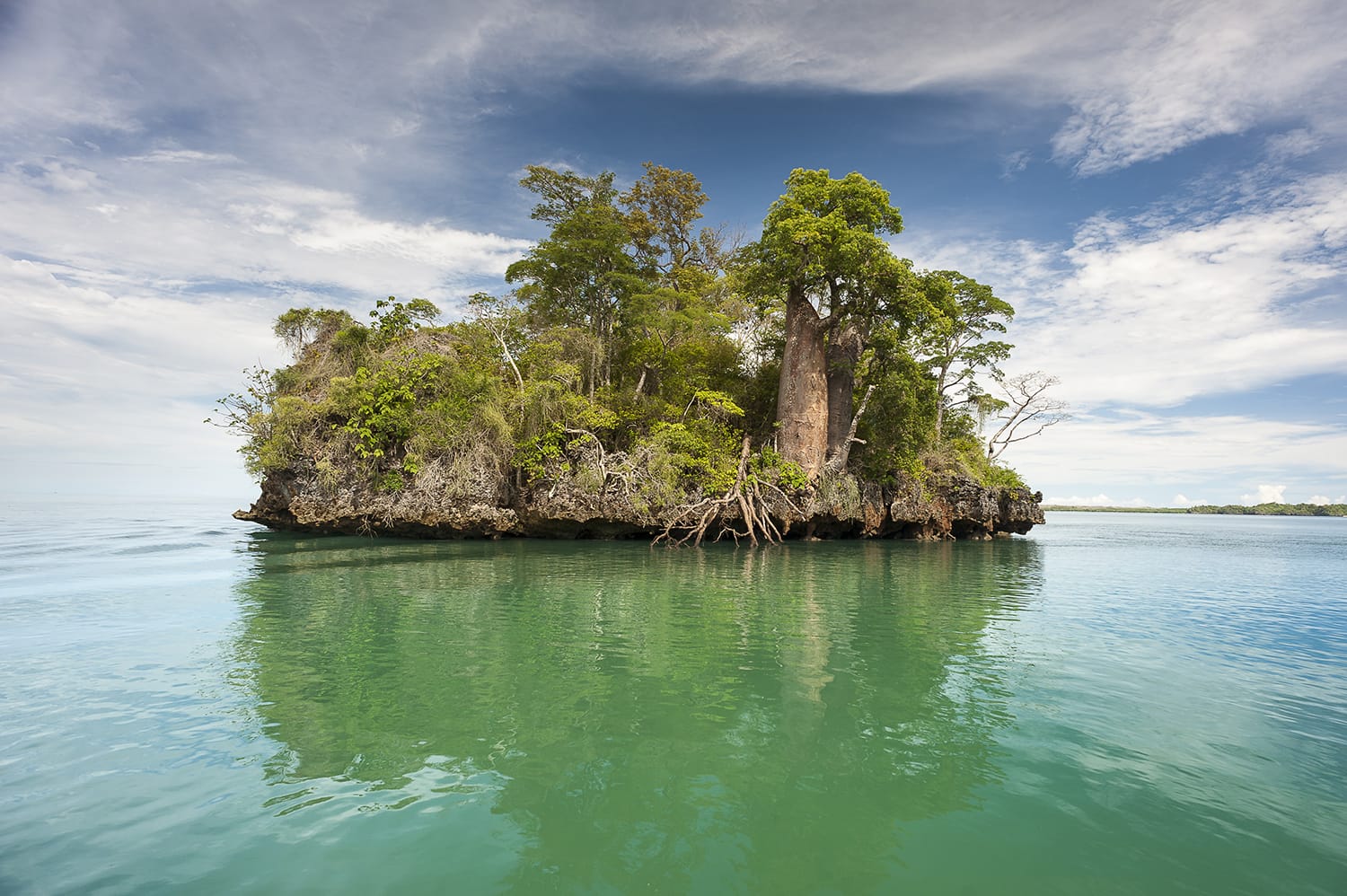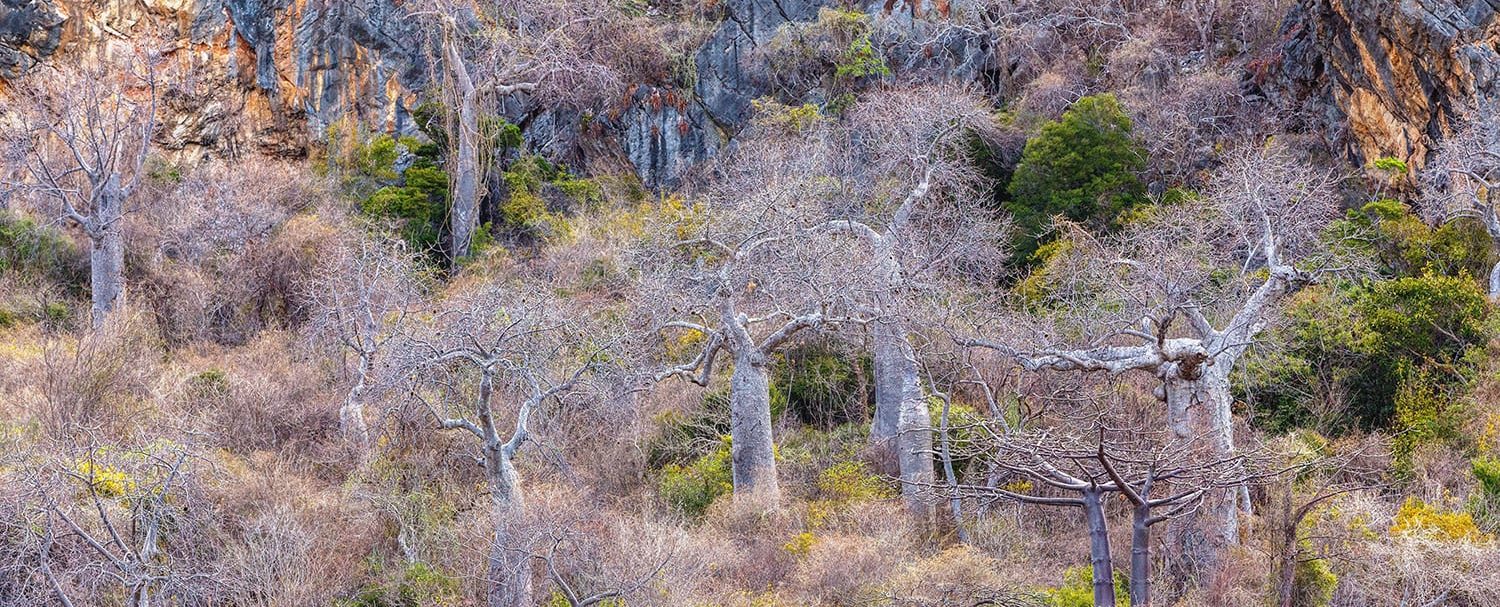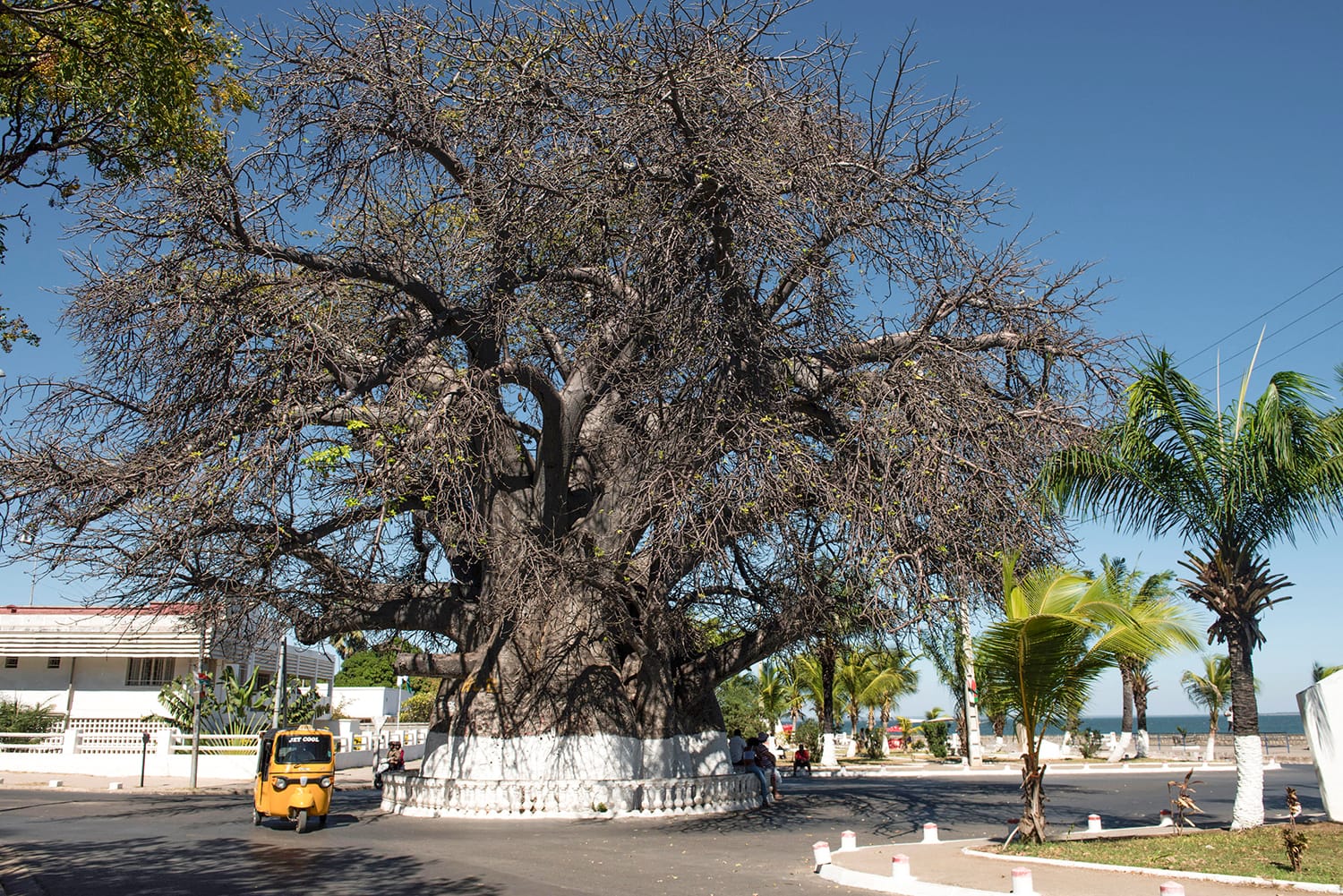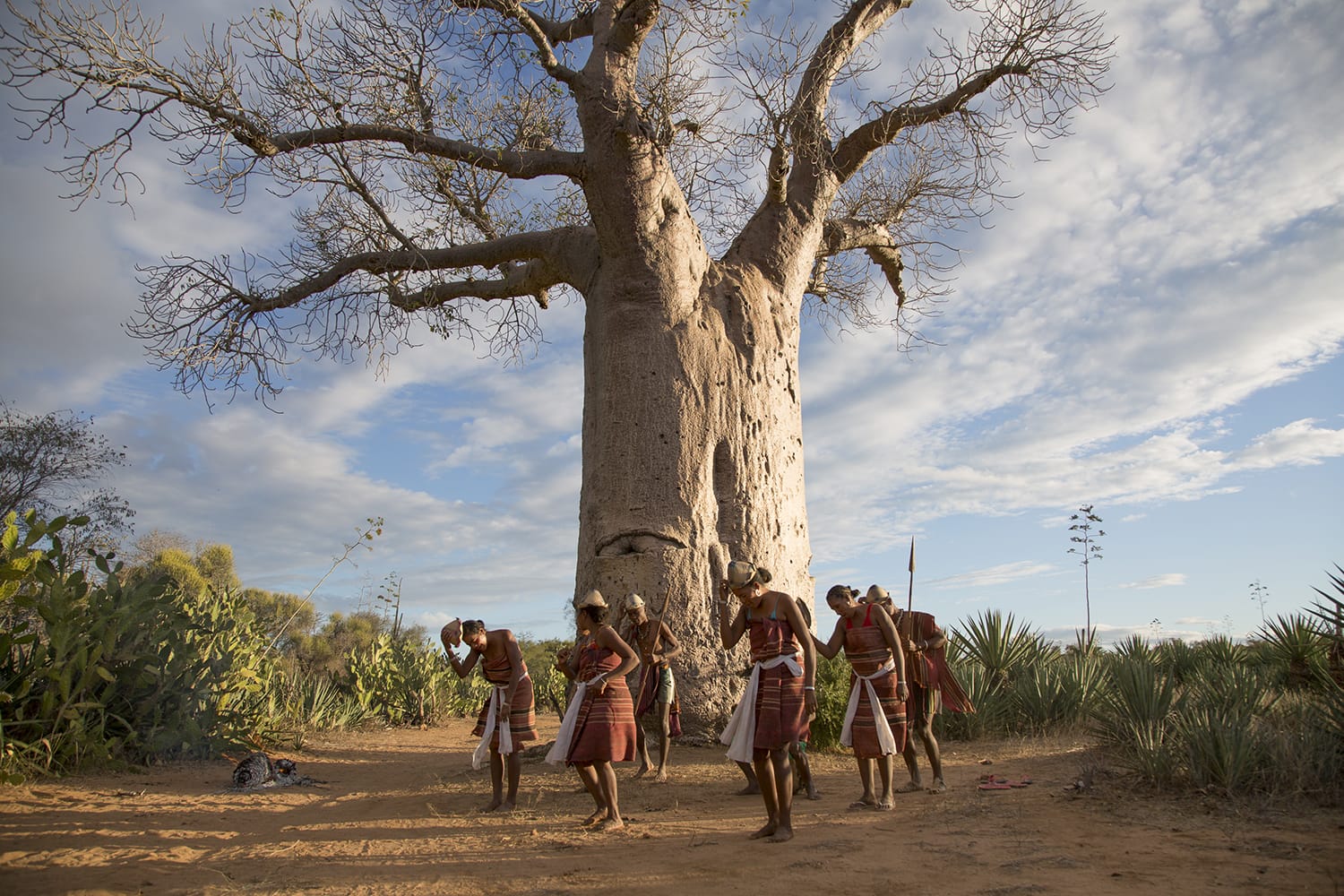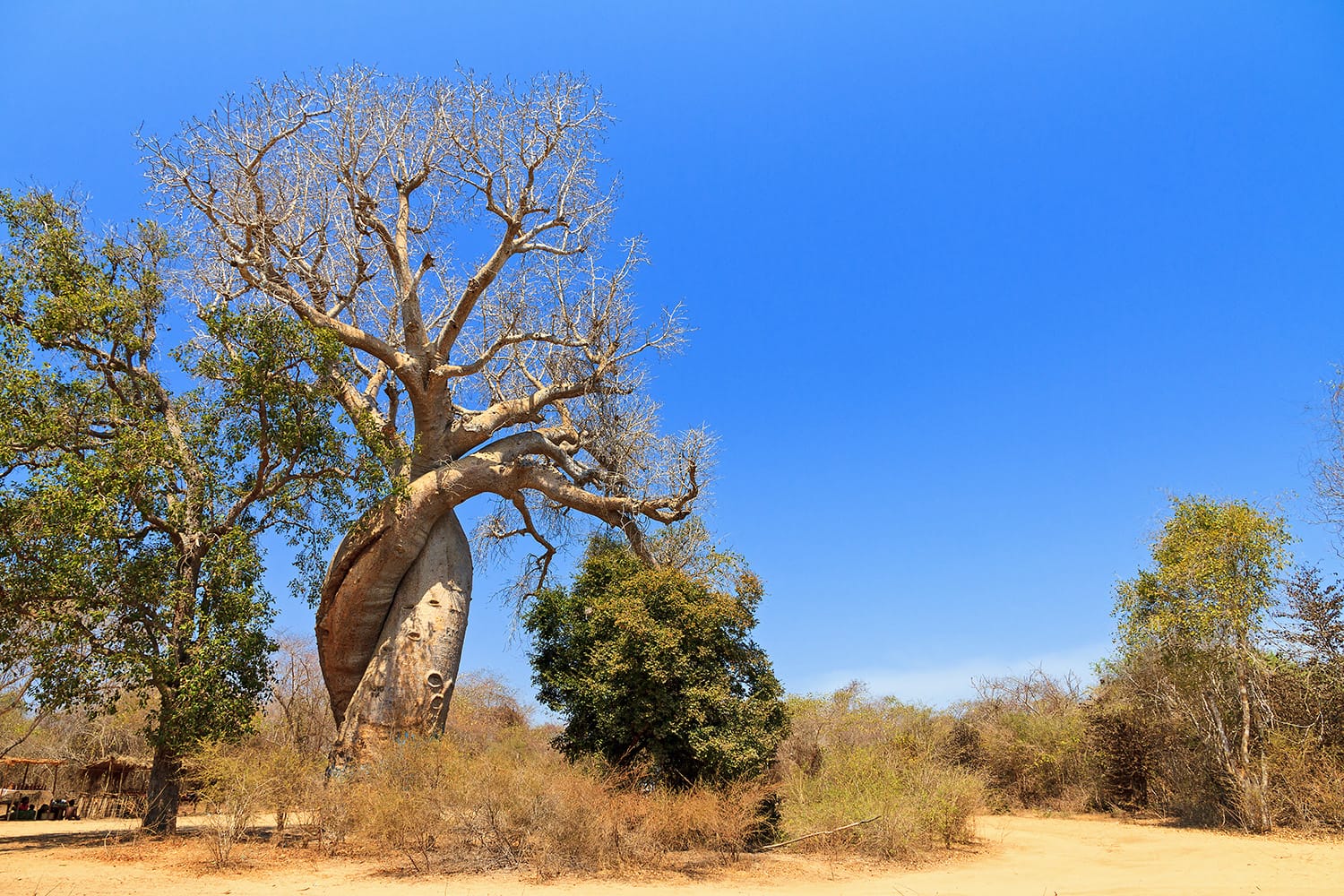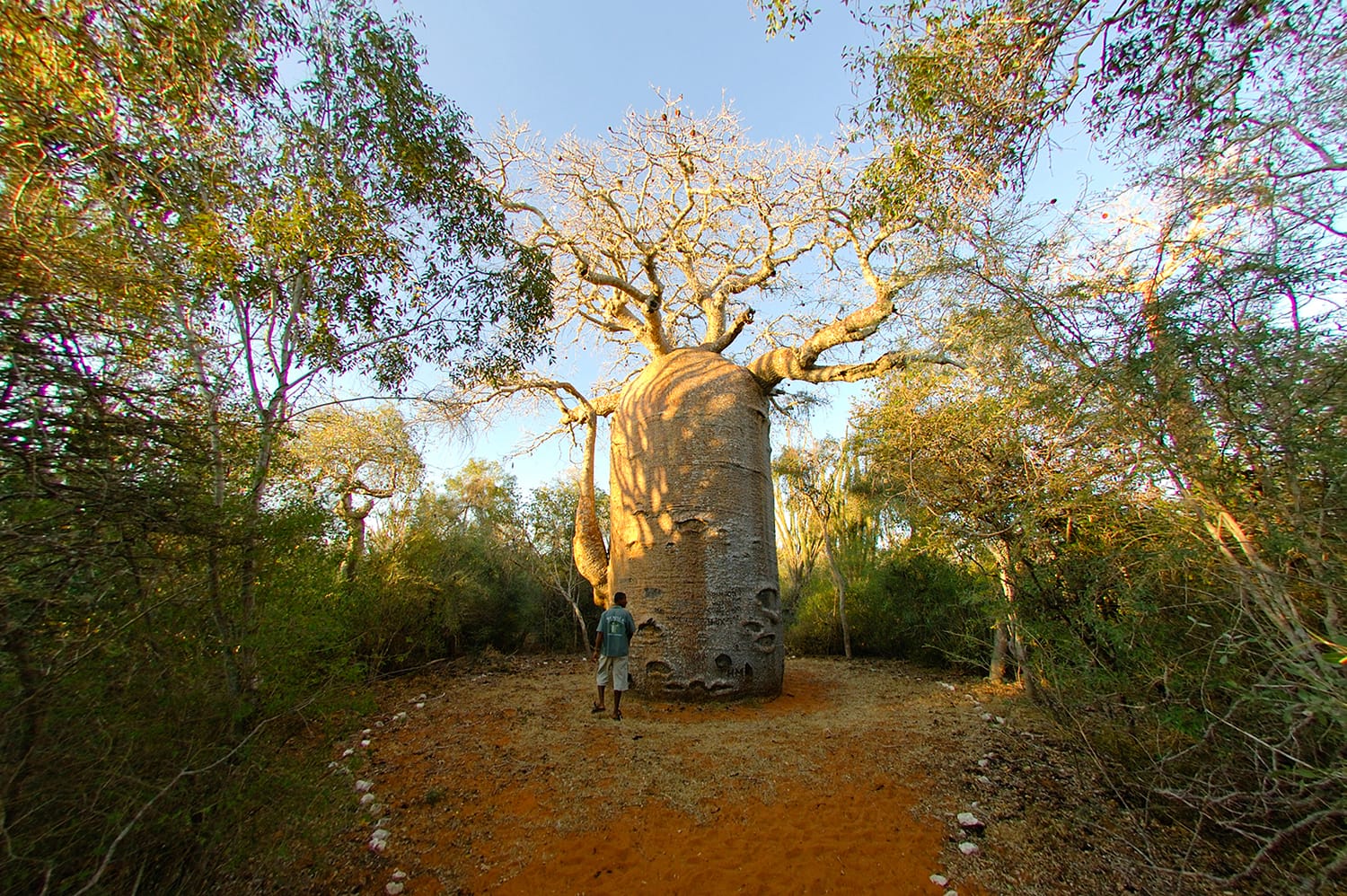Baobab species in the world
Adansonia Madagascarensis, Adansonia Za, Adansonia Rubrostripa Fony, Adansonia Grandidieri, Adansonia Perrieri, Adansonia Suarezensis, Adansonia Digitata (common African baobab, also present on the continent), Adansonia Gibbosa (Australian baobab).
All baobabs are known as Adansonia, after the French explorer and naturalist Michael Adanson who wrote about them in the 18th century when he spotted them near the coast of Senegal.
160 million years ago, after the Pangea, Gondwana was a super continent formed by South America, India, Africa and Australia. Its separation caused the continents to drift. Seventy million years ago, Madagascar broke away from the Indo-Asian plate and moved to its present position. Some species, both plants and animals, evolved differently on the island to form an ecosystem that is unique in the world.
The word Baobab comes from the Arabic “ba hobab” or “bu hibab” (meaning fruit with many grains) and the first time it is known is in 1592, when it appears in the Egyptian Book of Plants, where it is said that its then strange fruits could be found in the bazaars of Cairo.
Past and Future
The reproductive process of Madagascar’s baobabs was interrupted approximately 300 years ago. Human predation of fruits and seeds, arson and ecosystem degradation, as well as the introduction of invasive species could be the factors responsible for this tragedy, which is directly linked to the presence of humans on the island.
Possibly in the past, the Archeolemur and the Aepyomis (elephant bird) – both extinct with the arrival of humans to the island – were responsible for spreading the seeds of the baobab, helping its reproduction. It should not be forgotten that the germination of baobab seeds is a very long process.
The largest concentration of baobabs on the island is in the west, specifically in the Kirindy-Mitea National Park. Although the most visited place by tourists and the one that offers the best images is undoubtedly the famous Avenue of Baobabs, 18 kilometers north of the city of Morondava. The Malagasy call this avenue Ankorondrenala (where there are many baobabs).
In an economically underdeveloped country like Madagascar, rural communities rely heavily on natural resources to ensure their livelihoods, and this involves traditional farming methods based on slash-and-burn culture.
The population explosion that the island has undergone in recent decades and the lack of access to modern energy sources by the population are other risk factors.
Since the 1990s, more than 20 nature reserves and 7 national parks have been created on the island, although there is still not enough to be optimistic about the fate of these ancient trees in the future.
The Malagasy population uses the bark, fruit, flowers and leaves, but not the wood (of poor quality for construction and resistant to fire), which so far has meant that the endemic baobab species of the island have not disappeared, and although threatened by their lack of reproduction, give rise to a slight dose of hope.
The most imposing groups of baobabs on the island
In Madagascar, the Andansonia Grandidieri baobabs of the Avenue of Baobabs (Akorondrenala or assembly of baobabs) stand out above all others, both for their height, their size, their longevity and above all for the great concentration of this species lined up in perfect order of formation, like a floral army, in a walk of about 2 kilometers long. This group of Adansonia Grandidieri is located 18 kilometers from the city of Morondava.
Also spectacular are the baobabs of the “Enchanted Forest”, so named by us 🙂 many years ago, when we discovered them on a prospecting trip. This forest of baobabs (Adansonia Grandidieri but with a different morphology from those of Morondava) is very close to Andavadoaka, on the road to Morombe, in western Madagascar.
In the south of the island, near Ifaty, we find the Reniala Reserve, where we are also surprised by groups of baobabs of the species Adansonia Rubrostripa, called in Malagasy Fony, considered the bottle baobab par excellence, and in which Saint Exupéry was inspired to illustrate his book The Little Prince.
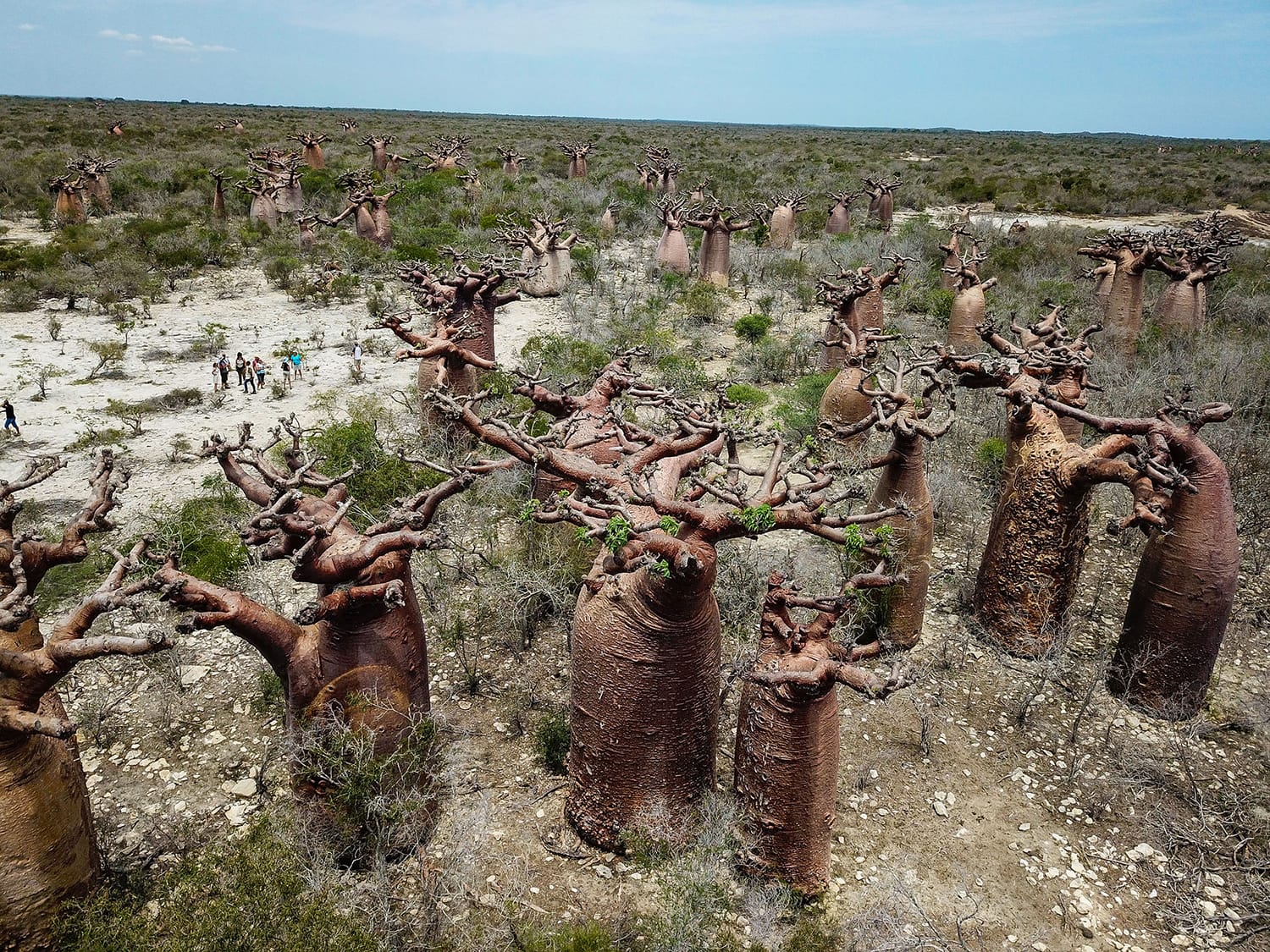
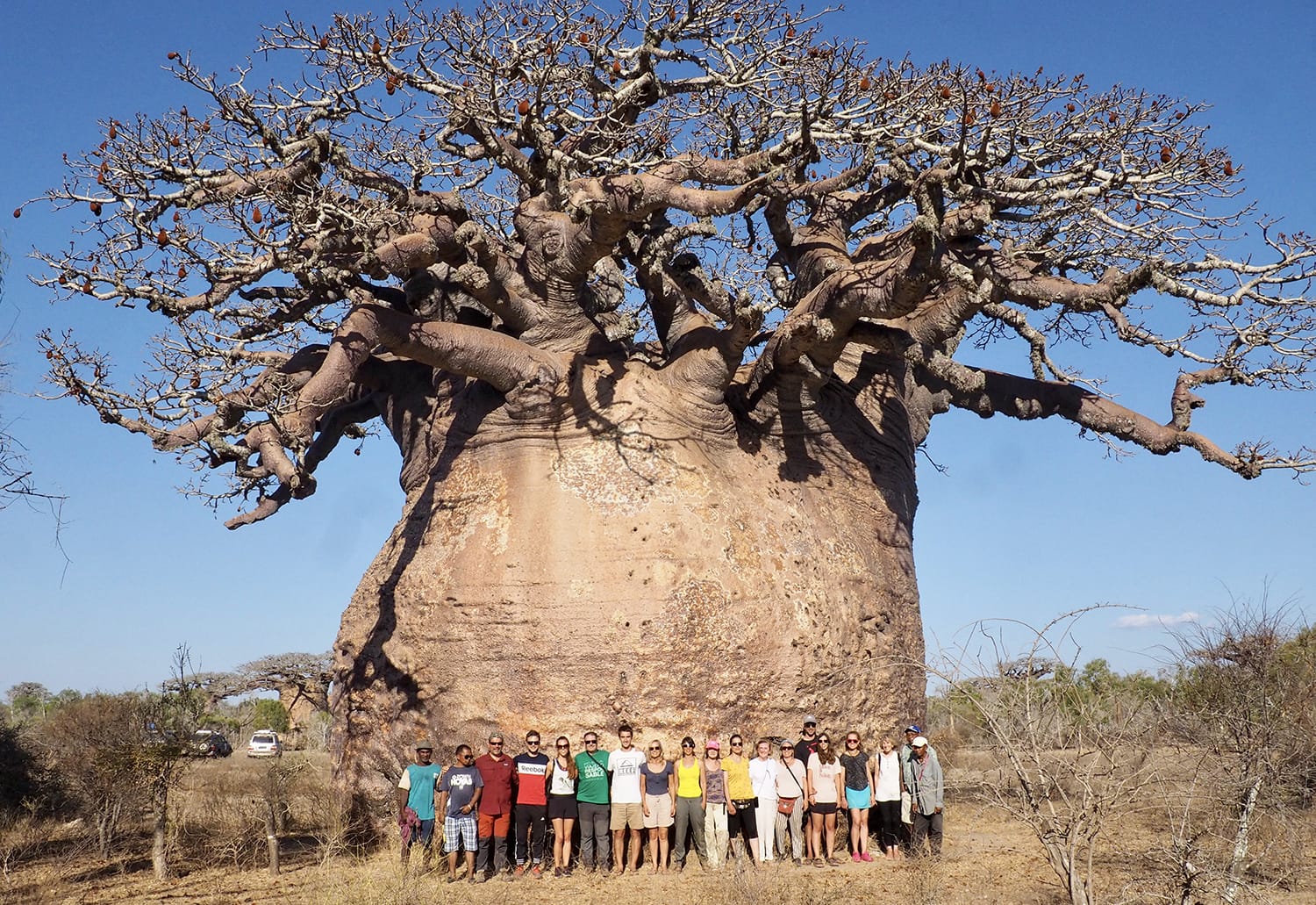
Tsitakakantsa
It is the largest baobab tree Madagascar has ever discovered and possibly one of the largest in the world. It is 30 meters in circumference. It is an Adansonia Grandidieri and is estimated to be more than 1,500 years old. Located near Morombe, from the Mangalavolo turnoff, the sandy tracks will take us in just over 1 hour by 4×4 to one of the places where some of the largest baobabs on the island are found. This is a sacred baobab tree, and to access it, we will have to perform a ceremony of relief to the ancestors or “fomba” in the company of the notables of the Sakalava Menabe village.
Other impressive baobab trees for their varied morphology are the Adansonia Suarezansis that can be found ascending the Montaña del Francés, near Diego Suarez, in the north of the island. Or the Great Baobab of Majunga, of the species Adansonia Digitata (which we share with the African continent).
Also in the basin of the Mangoky River, or on the banks of the Tsiribihina River we can find a great variety of baobabs of various species.
In the extreme south and in the Zombit National Park, the species Adansonia Za.
Myths, legends and beliefs
For the Malagasy, the baobab is a sacred tree. In many communities in the west and south of the island, councils of elders sit in the shade of one of these ancient trees to deliberate. It is what they call “the house of the word”. Young women also share their stories and gossip under the shade of these magnificent giants, and many times they even serve as a gathering place for festivities and initiation ceremonies, as well as impromptu musical concerts.
Many Malagasy believe that “kokolampo”, the spirit of the forest, lives inside baobabs, as do the souls of some ancestors, hence these trees are sacred to some communities in the south and west of the island.
The popular legends tell that the baobab, the so-called cursed tree because it defied the Gods, lived in a very humid place, on the coasts of the East of Madagascar, but it was always bothering the Creator with its lamentations and complaints. The gods of Nature, furious, uprooted him from his habitat and threw him to the other end of the island, to the arid lands of western Madagascar, with such bad luck, that he landed upside down and was condemned forever to have his roots visible. Hence in the local mythology it is called the inverted tree. But it is also called Renala, “the mother of the forest”.
There is a Malagasy proverb that goes like this: “it is more difficult to pull a baobab from your neighbor’s garden than a weed from your own”.
Text Sergi Formentin
Source ©Indigo Be Magazine









